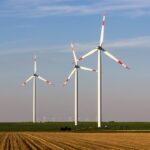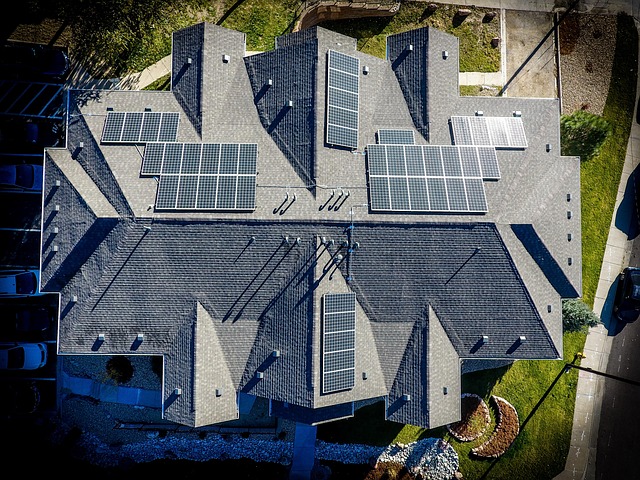The Hidden Benefits of Green Energy for Urban Development
As urban areas continue to grow and evolve, the search for sustainable solutions that support health, environment, and economy becomes increasingly pressing. Central to this pursuit is the transition to green energy—energy derived from renewable resources that can power our cities in a way that is cleaner, safer, and more efficient. While many are aware of the environmental benefits of green energy, such as reduced carbon emissions and decreased reliance on fossil fuels, the hidden advantages for urban development are equally compelling.
Enhancing Urban Livability
The adoption of green energy in urban settings significantly enhances livability, creating spaces where people can thrive. Solar panels, wind turbines, and energy-efficient buildings contribute to cleaner air and lower noise pollution, thereby improving overall quality of life.
Urban centers that utilize green energy sources promote health and well-being among residents. Cleaner air means fewer respiratory diseases and health issues linked to pollution. Green spaces incorporated with renewable energy solutions, such as solar-powered park lights or electric vehicle charging stations funded by renewable energy, create inviting environments that encourage outdoor activities. Moreover, well-planned urban green energy projects can lead to a reduction in urban heat islands, making neighborhoods more comfortable during hot weather.
Economic Growth and Job Creation
Transitioning to green energy systems presents substantial economic opportunities for urban areas. Investment in renewable energy technologies fuels job creation across a range of sectors, from manufacturing and installation to maintenance and research. The demand for skilled labor increases, leading to the development of training programs and educational opportunities focused on green technologies.
Moreover, local governments can stimulate economic growth by investing in renewable infrastructure. This investment often attracts businesses and talent seeking to operate in a progressive, environmentally-conscious city. As businesses prioritize sustainability, cities that lead in green energy will likely experience an influx of companies and industries keen to capitalize on eco-friendly reputations.
Energy Independence and Resilience
Cities increasingly depend on external energy sources, making them vulnerable to market fluctuations and supply disruptions. By investing in green energy infrastructure, urban areas can enhance their energy independence, producing their own energy locally and thereby reducing reliance on centralized utilities and fossil fuel imports.
This self-sufficiency bolsters urban resilience, as cities can better withstand crises related to energy supply, such as natural disasters or geopolitical conflicts. Renewables, particularly when coupled with energy storage solutions, provide a buffer against disruption, ensuring continuous energy availability. This feature is particularly vital for essential services such as hospitals, emergency services, and communication networks that require stable power access to function effectively.
Community Engagement and Social Equity
Green energy projects can foster community engagement and promote social equity within urban areas. As cities embark on the transition to renewable energy, local populations have opportunities to participate in decision-making processes regarding energy policies and infrastructure development. This involvement ensures that the needs and preferences of various community groups are considered, resulting in solutions that reflect the diverse urban populace.
Additionally, many green energy initiatives offer programs that specifically aim to benefit low-income communities. For example, initiatives can provide subsidies or incentives for the installation of solar panels on low-income housing or partner with community organizations to improve energy efficiency. It not only enhances the quality of life for disadvantaged populations but also promotes a sense of ownership and pride in the sustainable transformation of their neighborhoods.
Attracting Investment and Tourism
Urban areas that prioritize green energy stand out as progressive, forward-thinking locations that attract both investment and tourism. Investors looking for sustainable opportunities are more likely to invest in cities committed to renewable energy initiatives, sensing that such environments foster innovation and economic growth. Moreover, financial institutions and governmental bodies are increasingly offering grants and incentives for cities that implement sustainable energy projects, further enhancing the attractiveness of green energy investments.
From a tourism perspective, cities with robust green energy campaigns can brand themselves as eco-tourist destinations. Visitors are becoming more environmentally conscious and often seek experiences in cities that prioritize sustainability. This shift encourages local businesses to adopt sustainable practices, creating a virtuous cycle of eco-friendly initiatives that benefit the economy and the environment.
Urban Connectivity and Green Transportation
Green energy solutions extend beyond stationary applications; they also play a crucial role in the development of green transportation networks. Urban areas that invest in electric vehicle infrastructure, such as charging stations and electric public transport options, facilitate the transition to low-emission travel. This not only reduces greenhouse gas emissions but also eases traffic congestion and the overall strain placed on city infrastructure.
Integrating renewable energy into public transport systems offers a dual benefit: it enhances mobility while reducing the environmental impact. For instance, electric buses powered by renewable sources create a cleaner, quieter transportation option for city dwellers, thereby encouraging higher public transportation usage and reducing reliance on personal vehicles.
Innovative Urban Design and Planning
The integration of green energy into urban design and planning promotes innovation. Architects and urban planners embrace green technologies, creating smart cities equipped with features like energy-efficient buildings, green roofs, and urban farms powered by renewable energy. These innovations not only enhance aesthetic appeal but also increase functionality and sustainability.
By prioritizing green energy, urban planners can create multifunctional spaces that promote community interaction, recreation, and green living. Districts that harness renewable energy often serve as models for sustainable urban development and provide valuable lessons for cities worldwide seeking to address similar challenges.
Global Leadership and Responsibility
In an interconnected world increasingly affected by climate change, cities that invest in green energy and act as leaders provide an example of responsible stewardship. They demonstrate a commitment to addressing global challenges and recognizing the local impact of their energy consumption. This leadership is vital as urban areas contribute more than 70% of global carbon emissions.
By prioritizing renewable resources, cities not only reduce their own environmental footprint but also encourage other regions to follow suit. Many sustainable urban development strategies include sharing knowledge, best practices, and technology with other municipalities. This collaborative approach fosters a global network dedicated to sustainability and shows that urban areas can indeed lead the charge toward a greener future.
The Bottom Line
While the environmental advantages of green energy are immediately recognizable, the hidden benefits for urban development offer a profound opportunity to reshape our cities. From enhancing livability and boosting economic growth to fostering community engagement and promoting social equity, the multifaceted impacts of green energy are critical to building sustainable urban environments. As we continue to grapple with the challenges posed by climate change, urban centers must embrace green energy solutions not just as a trend but as a fundamental strategy vital for their future health and resilience.
In embracing green energy, urban areas are positioning themselves at the forefront of a sustainable, innovative future, setting standards and paving the way for generations to come. Through collective commitment and action, the vision of vibrant, prosperous, and safe urban spaces powered by renewable energy can become a reality.










